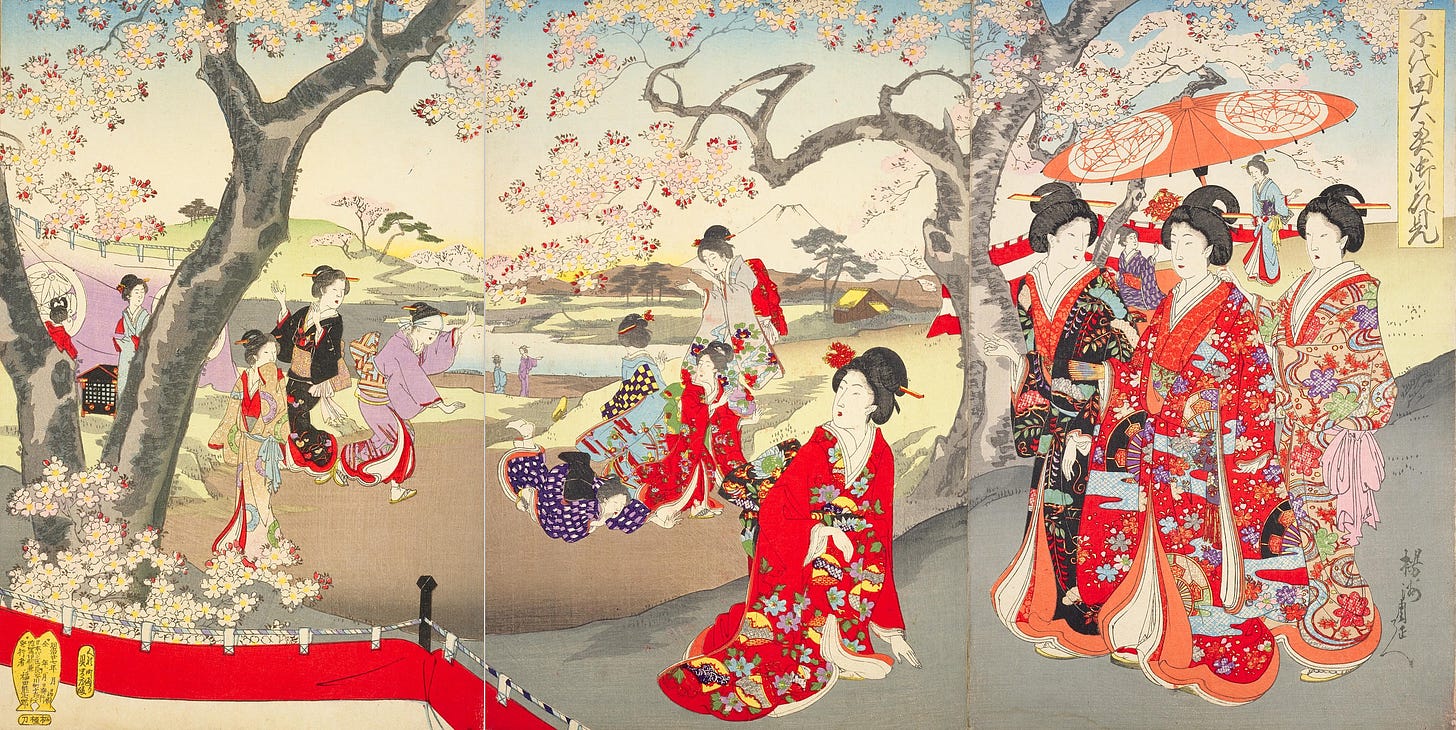When I lived in Kyoto, Japan as a college student, I was lucky to see the national celebration of the seasonal blooming of cherry trees. It is called Hanami or flower-viewing or 花見.
The practice of hanami is centuries old. It began during the 8th century, when it referred to the viewing of the ume, or plum tree. But later hanami was synonymous with 'sakura' - cherry tree - and the blossoming of the cherry trees. These blossoms denoted the time to begin rituals that marked the beginning of the planting season.

The planting time rituals ended with a feast under the cherry trees, and this persists to today. Starting in late March, television weather reporters give the public daily blossom forecasts, tracking the "cherry blossom front" as it progresses from the south to the north. Families, coworkers, and friends rely on these to quickly organize hanami parties as the cherry trees begin to bloom locally. To be honest, it is more about the eating and partying but you need the cherry blossoms to sit under.
In Kyoto we sat on low platforms built for Hanami under the trees. Then they were taken away when the blossoms fell.
Parks like Tokyo's famous Ueno Park become crowded with picnickers, and rowdy nighttime revels take on a festival atmosphere. Hanami at night is called yozakura, literally ‘night sakura’. In Ueno Park, temporary paper lanterns are hung for the purpose of yozakura.
Why the cherry? The delicacy of the sakura blossom has captivated the Japanese for centuries and you can find it in many forms of Japanese art. But the flower's delicate quality lends it a melancholy air, as well. After the cherry tree's buds open, it's just a few short days before the blooms vanish entirely -- the lovely petals all fall in a spectacular flurry.
The blossoms' ephemeral beauty adds to its quiet allure.
In Japan, the short-lived cherry blossom signifies the fleeting beauty of Nature.
Cherry tree blossoms remind us that life is made up of singular moments.








